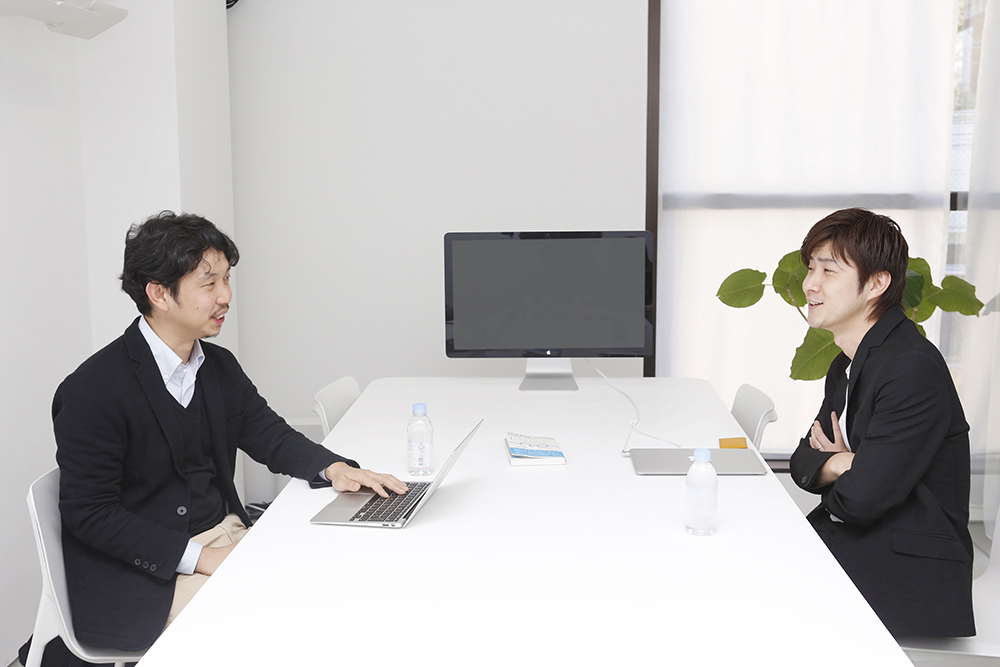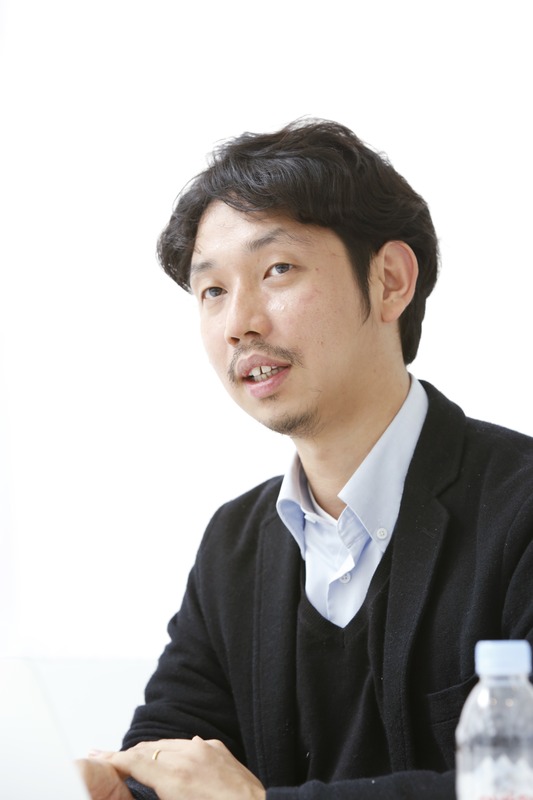In this era of rapid change, where even near-future predictions are impossible, we must find new roles and ways of working within society ourselves, rather than simply following precedent and convention.
Shusaku Hirota, a graduate of the Faculty of Engineering, Department of Mechanical Engineering, is one such individual. Currently working at Dentsu Inc. as a "Communication Planner" in the Platform Business Bureau, he explores unprecedented new forms of corporate communication. In July 2013, he published his book 'SHARED VISION―Communication That Starts by Valuing the Other Person', sharing his practical insights on the nature of communication in this era where companies and consumers connect on a level playing field.
In this series, Mr. Hirota will interview individuals—not limited to the advertising industry—who have discovered and are practicing such new ways of working.
Leveraging his background in engineering, Hirota analyzes consumer needs and information diffusion patterns from social data. He then applies these insights to communication activities and creative development. Currently within Dentsu Inc., he is pioneering a new work style called "Communication Planner." For this conversation, Hirota chose Kinya Tagawa, founder of takram design engineering (hereafter takram), who has created entirely new roles as a "design engineer."
The two share a senior-junior relationship from the same laboratory in the Department of Mechanical Engineering at the University of Tokyo's Faculty of Engineering. Takagawa's pursuit of a work style that transcends the boundaries between engineer and designer since their student days was an aspirational figure for Hirota as well.
Question① What inspired you to become a "design engineer"?
Hirota: "I originally majored in mechanical engineering because I loved making things. But once I got there, I learned the reality that engineers and designers work in separate fields—you don't handle everything yourself. Around that time, I learned about Mr. Tagawa, who was already doing fascinating work that crossed those boundaries. I admired him even then.
Tagawa: To be honest, I was also naive as a student and thought engineers did all the manufacturing themselves. But during my third year of university, while interning at an appliance manufacturer, I learned the reality of specialization and was shocked. After that, I agonized over whether to become an engineer or a designer. Ultimately, I decided, "Let's not decide which path to take until I turn 30; I'll just try things out." I resolved to become my own test subject, verifying the hypothesis that "there must be a way to work as both an engineer and a designer."
Mr. Hirota himself works as a "Communication Designer," tirelessly creating new forms of communication between companies and consumers, not limited to advertising. The conversation naturally turned to how he cultivates the next generation of "Design Engineers," following in Mr. Tagawa's footsteps.
Question②: "How do you develop people?"
Hirota: How do you cultivate "design engineers"?
Tagawa: takram's work can be broadly categorized into four areas, classified along two axes: Engineer ⇔ Design and Software ⇔ Hardware. For example, in software design, there are many specialists like UI designers. People joining takram initially have their footing in one of these areas. We first help them hone their skills in their core domain. Then, we encourage them to step into adjacent, different domains. Gradually, they acquire skills covering all four areas. The boundaries between these four domains have different friction coefficients. We help them develop the skills needed to step into adjacent areas more easily.
Hirota: So the ease of stepping over differs. In the advertising industry, we face a similar "osmotic pressure problem" at the boundary between digital and creative. It's relatively common for people with digital expertise to become copywriters. However, if you suddenly tell someone who's spent their career planning mass advertising campaigns to "do digital creative," it's often difficult for them to adapt immediately.
Analyzing the results of daily communication activities, adjusting based on the response, and deciding what to do the next day... Hirota aims for the "real-time" execution of communication activities based on the PDCA cycle. He also has a strong interest in takram's design process.
Question③ "What are the benefits of continuously running PDCA?"
Hirota: What I'm trying to do now is make communication activities real-time. We build ideas based on data, and by continuously running PDCA, you get those "We nailed it!" moments.
Tagawa: PDCA has two key benefits. First, hypotheses are progressively refined step by step, automatically improving quality. Second, it makes challenging new hypotheses easier. Even when you have no idea what the right answer is, you can quickly test multiple hypotheses. By continuously running PDCA, you can simultaneously advance both vertical and horizontal processes: creating hypotheses and refining the ones you create.
Hirota: So, the "vertical" part you just mentioned—that is, the PDCA approach specifically for becoming creative—is a distinct concept. On the other hand, I think the need for creative leaps, like flashes of insight, remains until the very end.
Tagawa: It does. When you unravel a product's appeal, design elements contribute significantly, and that's where the creative leap becomes central. However, truly compelling products are built on the foundation of achieving "zero dissatisfaction." There's often a misunderstanding: the creative leap addresses the upside of appeal. But appeal alone doesn't guarantee sales. Unless "zero dissatisfaction" is achieved, the product won't sell.
Hirota: It's painful to hear how the advertising industry tends to focus solely on debates about the uniqueness of ideas (laughs). Recently, though, some planners are starting to shift their thinking. Instead of just trying to shock with uniqueness, they're considering how to create a pleasant communication experience for the recipient in a holistic way. Examples include call center operations or designing PR strategies. When you venture into these non-advertising areas, I believe the perspective of eliminating dissatisfaction becomes essential in communication too.
Mr. Tagawa, who Hirota considers a "pioneering senior who blazed new trails." At the end of their conversation, Hirota posed the question: "What skills do you consider essential?"
Question④ "What do you mean by 'thinking power'?"
Hirota: What kind of things do you usually talk about with the takram members?
Tagawa: I always tell them, "Develop your thinking skills." The problems we face are always complex, often seeming like groping in the dark. It's a situation where you don't know what the right answer is. So, you need the ability to move forward step by step, even if it's by trial and error, and steadily get closer to the goal. But there are no precedents, and seniors won't just tell you the answers. In that sense, I want them to develop the ability to think for themselves.
Hirota: Is there a reference point or framework you use when thinking?
Tagawa: Thinking itself starts with forming hypotheses, so you can proceed even without evidence. However, sometimes you can't evaluate the hypothesis you've formed. In those cases, I try to think, "I don't have enough information." To figure out what information is missing, you need a bird's-eye view—what I call "meta thinking." The problem is, few people possess this "meta thinking" ability. Japanese companies are increasingly siloed, so we especially need to cultivate "integrators" who bridge the gaps between these silos.
Hirota: I realized that just like Mr. Tagawa, who serves as an integrator as a "design engineer," we in advertising agencies can also be integrators and find opportunities to be useful to clients. Thank you very much.
For the full conversation, visit Adtai!






